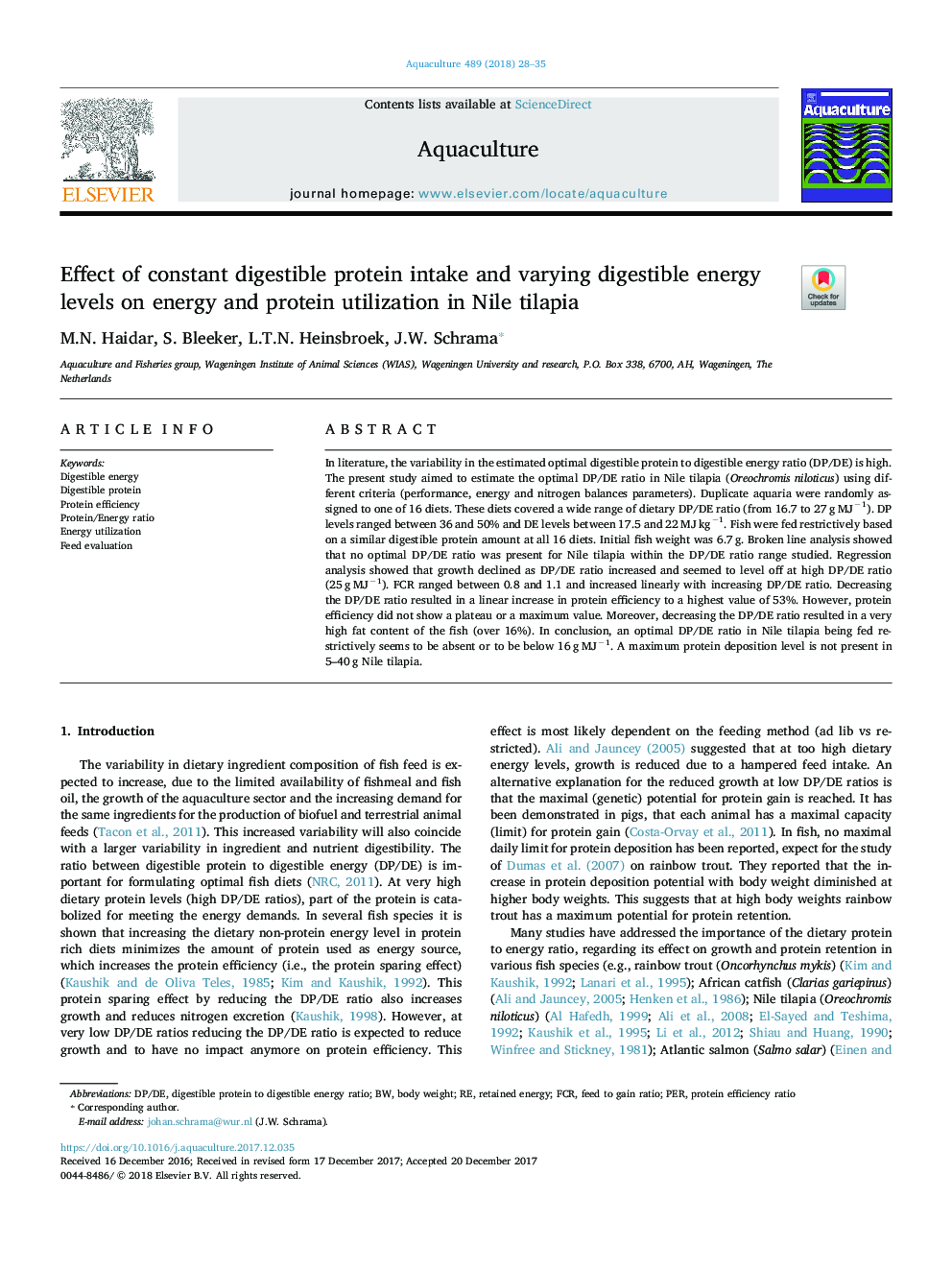| Article ID | Journal | Published Year | Pages | File Type |
|---|---|---|---|---|
| 8493351 | Aquaculture | 2018 | 8 Pages |
Abstract
In literature, the variability in the estimated optimal digestible protein to digestible energy ratio (DP/DE) is high. The present study aimed to estimate the optimal DP/DE ratio in Nile tilapia (Oreochromis niloticus) using different criteria (performance, energy and nitrogen balances parameters). Duplicate aquaria were randomly assigned to one of 16 diets. These diets covered a wide range of dietary DP/DE ratio (from 16.7 to 27â¯gâ¯MJâ1). DP levels ranged between 36 and 50% and DE levels between 17.5 and 22â¯MJâ¯kgâ1. Fish were fed restrictively based on a similar digestible protein amount at all 16 diets. Initial fish weight was 6.7â¯g. Broken line analysis showed that no optimal DP/DE ratio was present for Nile tilapia within the DP/DE ratio range studied. Regression analysis showed that growth declined as DP/DE ratio increased and seemed to level off at high DP/DE ratio (25â¯gâ¯MJâ1). FCR ranged between 0.8 and 1.1 and increased linearly with increasing DP/DE ratio. Decreasing the DP/DE ratio resulted in a linear increase in protein efficiency to a highest value of 53%. However, protein efficiency did not show a plateau or a maximum value. Moreover, decreasing the DP/DE ratio resulted in a very high fat content of the fish (over 16%). In conclusion, an optimal DP/DE ratio in Nile tilapia being fed restrictively seems to be absent or to be below 16â¯gâ¯MJâ1. A maximum protein deposition level is not present in 5-40â¯g Nile tilapia.
Keywords
Related Topics
Life Sciences
Agricultural and Biological Sciences
Aquatic Science
Authors
M.N. Haidar, S. Bleeker, L.T.N. Heinsbroek, J.W. Schrama,
